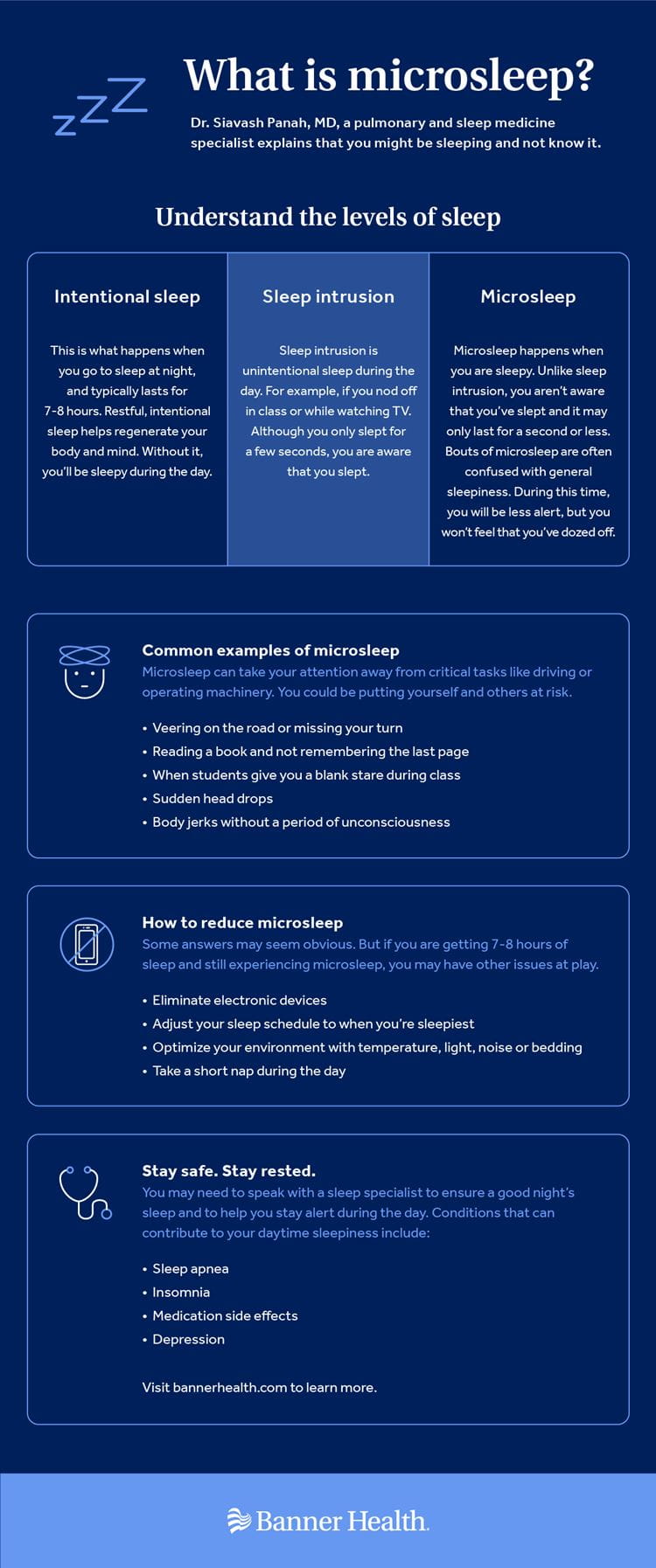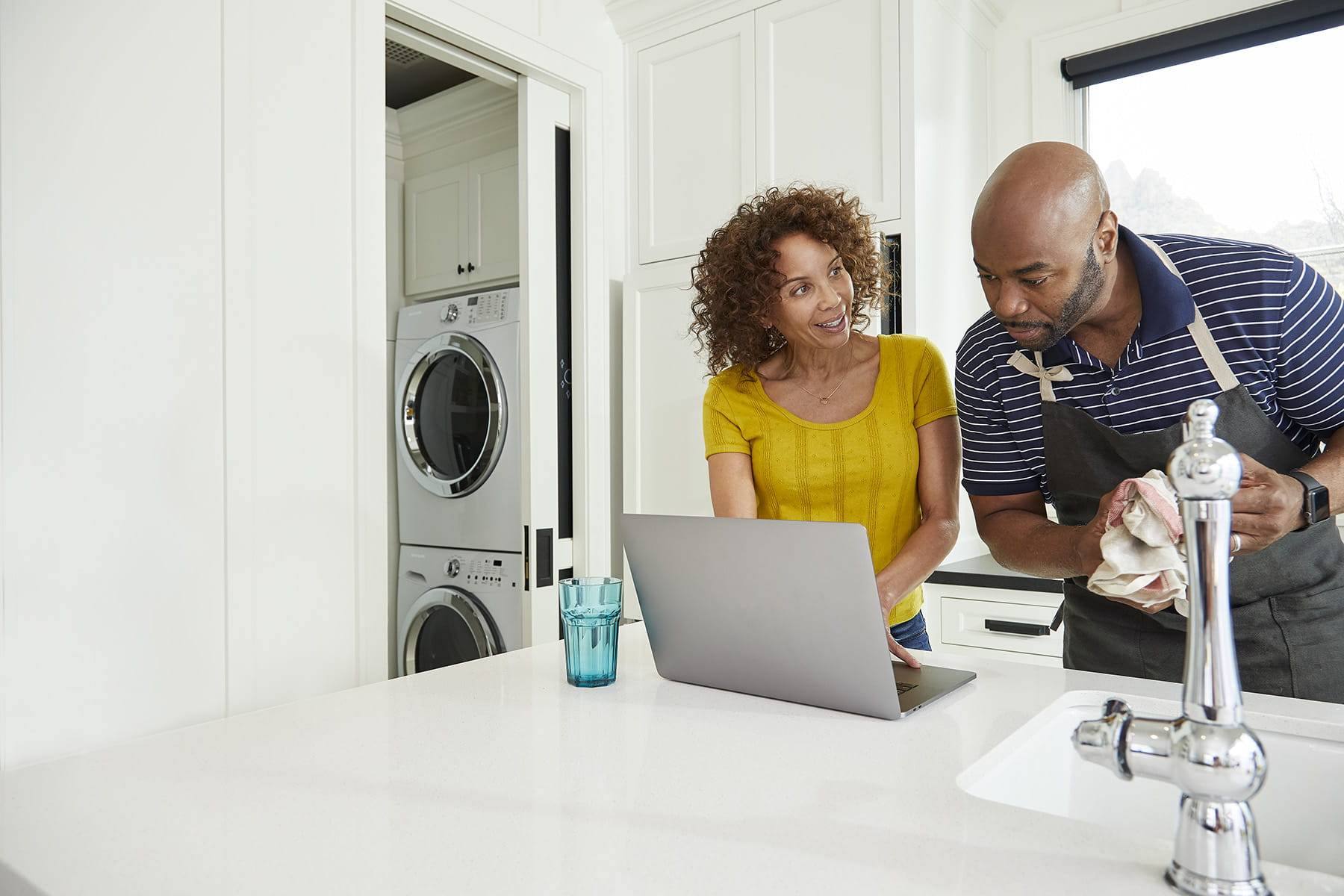Estás viendo la televisión y empiezas a sentirte desanimado, o estás en una larga reunión de directorio y no recuerdas lo que se dijo en los últimos dos minutos. Aunque quizás no lo sepas, en ambos casos, podrías estar experimentando microsueño. El DoctorSiavash Panah , especialista en sueño de la Banner Health Clinic en el norte de Colorado, ayudó a definir esta peligrosa consecuencia de la somnolencia.
¿Qué es el microsueño?
A todos nos ha pasado. Te acuestas en la cama leyendo un libro, pero al llegar al final de la página te das cuenta de que no tienes ni idea de lo que acabas de leer. Esto suele ser señal de que es hora de apagar la luz y dormir. Lo que quizá no sepas es que estabas experimentando microsueño. No es tan extremo como quedarse dormido por completo, pero sí afecta nuestra consciencia y puede hacer que actividades como conducir un coche o cuidar a un niño sean extremadamente peligrosas. Consulta esta infografía para conocer los niveles de sueño.
¿Necesito una siesta?
No es ningún secreto que dormir bien es una parte esencial de la rutina diaria de la mayoría de las personas. De hecho, los Centers for Disease Control and Prevention (CDC) informan que uno de cada tres adultos no duerme suficientes horas. Por lo tanto, una siesta ocasional puede ayudar a compensar las lagunas naturales que surgen con nuestro ritmo de vida ajetreado.
¿Qué es la microsiesta?
“En realidad, todas las siestas deberían ser 'micro'”, afirmó el Dr. Panah. “Una siesta eficaz no debería exceder los 20 o 30 minutos. Si después de eso sigues aturdido, no estás descansando lo suficiente durante la noche”. Una “micro-siesta”, a veces llamada siesta rápida, es simplemente una siesta que dura unos minutos, en lugar de horas. El Dr. Panah ofreció algunos consejos para asegurar una siesta eficaz.
¿No puedes dormir? Levántate.
Te apetece una siesta, pero después de 15 minutos tumbado en el sofá, estás más despierto que nunca. Nos ha pasado a todos. Si no consigues dormirte, levántate y vuelve a intentarlo cuando tengas sueño.
¿Aún estás aturdido? Duerme más por la noche.
Puede que te sientas aturdido por un momento, pero si después de una siesta sigues sintiendo somnolencia, es que no estás descansando bien por la noche. Si te cuesta dormir bien o experimentas somnolencia diurna excesiva, puede que haya problemas más graves, como apnea del sueño u otros trastornos del sueño. Un especialista en sueño puede ayudarte a encontrar soluciones.
Una siesta apropiada no necesita alarma.
No quieres dormir una siesta demasiado larga, así que poner una alarma está perfectamente justificado. Pero lo cierto es que, si necesitas una alarma, puede que necesites un sueño nocturno más reparador.
Las buenas siestas suelen ser sin sueños.
Normalmente, se tarda más de 45 minutos en entrar en la fase REM (la etapa en la que sueñas). "Si tienes sueños durante la siesta, podría ser señal de que no estás durmiendo lo suficiente en la fase REM por la noche", explicó el Dr. Panah.
Pero el Dr. Panah advirtió que dormir siestas con demasiada frecuencia es señal de que no se descansa bien por la noche. Quizás sea hora de cambiar algunos hábitos nocturnos para sentirse más descansado durante el día. Evite los peligros del microsueño creando tiempo y espacio para un descanso efectivo todos los días.
Consulte estos otros artículos útiles sobre el sueño y cómo garantizar un buen descanso nocturno.



